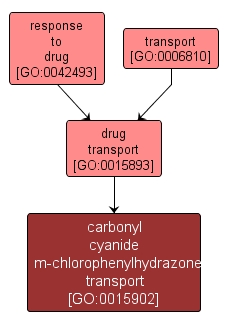| Desc: |
The directed movement of carbonyl cyanide m-chlorophenylhydrazone into, out of, within or between cells by means of some external agent such as a transporter or pore. Carbonyl cyanide m-chlorophenylhydrazone is a proton ionophore, commonly used as an uncoupling agent and inhibitor of photosynthesis because of its effects on mitochondrial and chloroplast membranes. |














